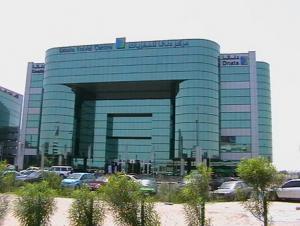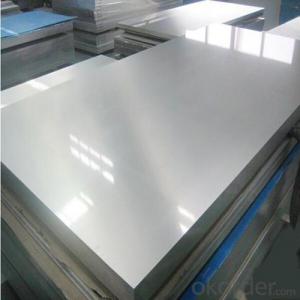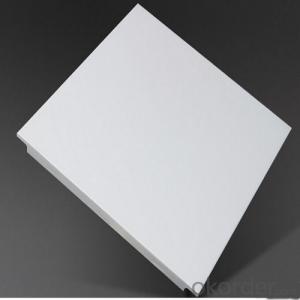Aluminium Alloy and Aluminium Sheet for Building Industrial
- Loading Port:
- Shanghai
- Payment Terms:
- TT OR LC
- Min Order Qty:
- 5 m.t.
- Supply Capability:
- 10000 m.t./month
OKorder Service Pledge
OKorder Financial Service
You Might Also Like
Item specifice
1.Structure of Aluminium Alloy and Aluminium Sheet for Building Industrial Description:
Aluminium Alloy and Aluminium Sheet for Building Industrial is mainly used in billboards, building exterior decoration, bus body, high rise buildings and factories wall decoration, kitchen sink, lamp, fan leaves and so on.
We can produce aluminum sheet,color aluminum sheet and plastic composite panel base material. They are widely used in construction and decoration, hardware and electric appliances manufacture, automobile manufacture and other industrial and civil purposes, such as electronic capacitor, rice cooker, refrigerator, computer casting, lamp shade, air-conditioner, cosmetics cover and box, air-conditioner radiator, inner container of disinfecting cabinet, ceiling board, automobile motherboard, cover board and top board, etc
2.Main Features of Aluminium Alloy and Aluminium Sheet for Building Industrial :
PVC or paper inter to protect the surface
Totally free from defects like white rust, oil patches
High Quality
Competitive Price
3.Aluminium Alloy and Aluminium Sheet for Building Industrial Images:
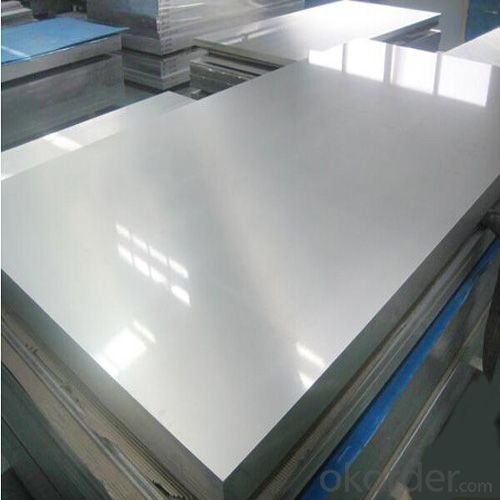

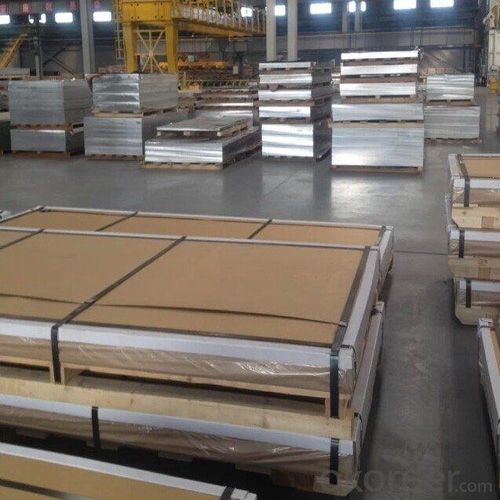
4. Aluminium Alloy and Aluminium Sheet for Building Industrial Specification:
| Alloy No. | Thickness (mm) | Width (mm) | Length (mm) | Temper | |
| A1050,A1060, A1070,A1100 | 0.2-100 | 20-2200 | 20-8000 | O,H12,H22,H14,H16,H18, H24,H26,etc | |
| 3A21,A3003,A3105,A3004 | 0.2-100 | 20-2200 | 20-8000 | O,H14,H18,H24,etc | |
| A5052 ,A5005,A5083,A5754 | 0.2-100 | 20-2200 | 20-8000 | O,H18,H24,H32,H34,H111,H112 ,etc | |
| A6061,A6082,A6063 | 0.2-200 | 20-2200 | 20-8000 | T4,T6, T651,etc | |
| A8011 | 0.2-100 | 20-2200 | 20-8000 | O,H12,H22,H14,H16,H18,H24,H26, etc | |
5.FAQ
Q1.How long have you been in this product?
A1:More than 10 years.
Q2. What's the minium quantity(MOQ)?
A2. 5 Metric tons
Q3. How long is shipping time?
A3. 7 (ready-made products)-25 days(OEM)
Q4. How do you guarantee the quality?
A4. 1. Cooperating and Exchaning experience with sevral quoted aluminum companies
2. Japanese and Swiss production line and skilled works (regular training and testing)
3. more than 10 years production experience.
Q5. Do you have after sale service?
A5. Yes. Any quality problem occurs within one year, pls take photoes,we will be responsible.
- Q:Can aluminum sheets be anodized in different colors?
- Yes, aluminum sheets can be anodized in different colors. Anodizing is an electrochemical process that enhances the natural oxide layer on the surface of aluminum. By immersing the aluminum sheet in an electrolyte bath and applying an electric current, a controlled oxidation process occurs, resulting in a thick and durable layer of oxide on the surface. During the anodizing process, various dyes can be added to the electrolyte bath, allowing the aluminum to absorb the dye molecules and create a colored oxide layer. This allows for a wide range of colors to be achieved, including red, blue, green, yellow, and many others. Additionally, the intensity and shade of the color can be controlled by adjusting factors such as the concentration of the dye and the voltage applied during the anodizing process. The anodized layer formed on the aluminum sheet not only provides a vibrant and aesthetically pleasing appearance but also improves its corrosion resistance and durability. This makes anodized aluminum sheets an excellent choice for architectural, decorative, and industrial applications where color customization is desired while maintaining the inherent benefits of aluminum.
- Q:What are the advantages of using aluminum sheets in the furniture industry?
- Aluminum sheets have numerous benefits when utilized in the furniture industry. To begin with, their lightweight composition makes them easy to transport and install, reducing the overall weight of furniture and simplifying assembly or rearrangement. Moreover, their lightweight nature allows for increased design flexibility, enabling manufacturers to create intricate and distinctive furniture pieces. Additionally, aluminum sheets possess exceptional durability and corrosion resistance. Unlike materials such as wood or steel, aluminum does not rust or deteriorate over time, making it suitable for both indoor and outdoor furniture. This durability ensures that furniture constructed from aluminum sheets has a longer lifespan, reducing the need for frequent replacements. Furthermore, aluminum sheets possess high malleability, facilitating effortless shaping and customization. This design flexibility empowers furniture manufacturers to fabricate pieces with intricate patterns, curves, and contours. Aluminum sheets can be easily molded into various shapes and sizes, providing limitless possibilities for creativity and innovation in furniture design. Moreover, aluminum sheets require minimal maintenance. They are easy to clean and necessitate minimal upkeep, saving time and effort for both manufacturers and consumers. Consequently, aluminum sheets are an ideal choice for furniture in high-traffic areas or public spaces where regular cleaning is necessary. Furthermore, aluminum sheets contribute to environmental sustainability. Aluminum is a highly recyclable material, allowing furniture made from aluminum sheets to be easily recycled at the end of its life cycle. This reduces the environmental impact and promotes sustainability within the furniture industry. Lastly, aluminum sheets possess excellent thermal conductivity. Furniture constructed from aluminum sheets can efficiently absorb and dissipate heat, providing comfort to users. For applications such as outdoor furniture or items exposed to sunlight, aluminum sheets can prevent overheating and maintain a comfortable temperature. In conclusion, the advantages of using aluminum sheets in the furniture industry encompass their lightweight composition, durability, malleability, low maintenance, environmental friendliness, and excellent thermal conductivity. These properties have made aluminum sheets a popular choice among furniture manufacturers, enabling them to produce high-quality, innovative, and long-lasting furniture pieces.
- Q:Are the aluminum sheets suitable for manufacturing aircraft fuselages?
- Yes, aluminum sheets are suitable for manufacturing aircraft fuselages. Aluminum is a popular choice for aircraft construction due to its high strength-to-weight ratio, corrosion resistance, and ease of fabrication. It is lightweight, which helps in reducing the overall weight of the aircraft, resulting in improved fuel efficiency and increased payload capacity. Additionally, aluminum can withstand the stresses and strains experienced by aircraft during flight. It is also a widely available and cost-effective material, making it a practical choice for aircraft manufacturers.
- Q:Is aluminum sheet resistant to UV rays?
- Indeed, aluminum sheet exhibits resistance to UV rays. By nature, aluminum develops a safeguarding oxide layer which functions as a shield against UV radiation. This protective layer aids in safeguarding the aluminum sheet from harm or deterioration caused by the sun's UV rays. Consequently, aluminum sheet proves to be an appropriate material for outdoor usage, enduring extended exposure to sunlight without experiencing fading or deterioration. Moreover, the reflective characteristics of aluminum also contribute to its resistance against UV rays, as it can effectively reflect a considerable portion of the sun's rays, diminishing heat absorption and the likelihood of damage.
- Q:Are 101 aluminum sheets suitable for heat exchangers?
- 101 aluminum sheets are not appropriate for heat exchangers. Heat exchangers necessitate materials that possess commendable thermal conductivity and corrosion resistance. Although aluminum is an adept heat conductor, the 101 aluminum alloy lacks the essential corrosion-resistant properties essential for heat exchangers. Heat exchangers often employ other aluminum alloys, such as 3003 or 5052, due to their superb thermal conductivity and corrosion resistance.
- Q:Does Aluminum Foil really work to help beat the summer heat?I live in San Diego which is known for having perfect weather pretty much all year round, but just yesterday we are starting to get some record breaking heat. Most apartments, condos, and houses do not have A/C because like I just mentioned it's usually in the high 60s or low 70s during the spring and summer, perfect.Will Aluminum Foil work or can someone else suggest anything else?!PLEASE note that I'm just putting aluminum foil on my bedroom window which just faces some other apartment complex and I am not concerned with the aesthetics. I might consider putting something up (but just not sure what) on the living room window other than aluminum foil since everyone can see that window.
- The aluminum foil does work, shiny side out. It just reflects some of that bright afternoon sun to keep the room from heating up. I use a window film I found at Home Depot that is UV filtering that works too. You cut it close to size, spray the window with water put it on. You squeegy out the water get rid of the bubbles and use a razor to trim it to exact size. Both of these work, it just depends on whether or not you want to eleminate any light that comes into the room or not.
- Q:What are the different cutting tools used for aluminum sheets?
- There are several cutting tools that can be used for aluminum sheets. 1. Circular Saw: A circular saw with a carbide-tipped blade can be used to cut aluminum sheets. It is important to use a blade with fine teeth to ensure a clean and smooth cut. 2. Jigsaw: A jigsaw equipped with a metal-cutting blade can also be used to cut aluminum sheets. This tool allows for more intricate cuts and curves. 3. Bandsaw: A bandsaw with a fine-toothed blade is another option for cutting aluminum sheets. It provides a straight and precise cut, making it ideal for larger or thicker sheets. 4. Shears: Electric or manual shears can be used to cut aluminum sheets. They are particularly useful for straight cuts and can achieve a clean finish. 5. Plasma Cutter: A plasma cutter can be used for cutting aluminum sheets, especially for thicker materials. It uses high-temperature plasma to melt through the metal, resulting in a precise and efficient cut. 6. Laser Cutter: Laser cutting machines are commonly used for cutting aluminum sheets. They produce a high-powered laser beam that melts and vaporizes the material, allowing for precise and intricate cuts. It is important to wear appropriate safety gear, such as gloves and goggles, when using any of these cutting tools. Additionally, choosing the right tool depends on the thickness of the aluminum sheet and the desired cut. It is recommended to consult a professional or refer to the manufacturer's guidelines for the specific tool being used.
- Q:How do you ensure the surface quality of aluminum sheets?
- To ensure the surface quality of aluminum sheets, several measures can be taken: 1. Cleaning: Before any surface treatment or inspection, it is essential to thoroughly clean the aluminum sheets to remove any dirt, grease, or other contaminants. This can be done with solvents, detergents, or specialized cleaning agents. 2. Visual Inspection: Conduct a visual inspection of the surface for any visible defects like scratches, dents, or pitting. This can be done by trained personnel using proper lighting and magnification tools. 3. Chemical Treatment: Depending on the desired surface finish and application, aluminum sheets may undergo chemical treatments like anodizing, chromate conversion coating, or passivation. These processes can enhance the surface quality, corrosion resistance, and aesthetic appearance of the sheets. 4. Mechanical Polishing: Mechanical polishing techniques such as grinding, buffing, or sanding can be employed to remove surface imperfections and achieve a smooth, glossy finish. Care should be taken to ensure consistency and avoid over-polishing, which can compromise the sheet's integrity. 5. Coating and Protecting: Applying protective coatings like lacquers, paints, or powder coatings can further enhance the surface quality, appearance, and durability of aluminum sheets. These coatings act as a barrier against corrosion, abrasion, and environmental factors. 6. Quality Control: Implementing rigorous quality control procedures throughout the manufacturing process is crucial. This includes regular inspections, testing, and documentation to ensure that the surface quality of aluminum sheets meets the required standards and specifications. 7. Handling and Packaging: Proper handling and packaging during transportation and storage are essential to prevent any surface damage. Adequate protective measures such as using protective films, paper interleaves, or cushioning materials can be employed to safeguard the surface quality until the sheets reach their final destination. By following these measures, manufacturers can ensure the surface quality of aluminum sheets, meeting the desired specifications and customer expectations.
- Q:What does aluminum plate "H12" mean?
- H12 indicates hardening of the work to the 1/4 state.Two digits (called hxx States), or three bit Arabia numbers (called hxxx States) are added to the letter H to indicate the subdivision status of the H.The first digits behind the H represent the basic handler for this state, as shown below:H1 - simply work hardening treatment status. The utility model is suitable for the condition that the required strength is obtained by the work hardening without the heating treatment. H2 - the state of work hardening and incomplete annealing. Apply to the work hardening degree exceeds the requirements of the finished products, after incomplete annealing, so that the strength to reduce the target products. For the alloy softening natural aging at room temperature, H2 and H3 corresponding to the minimum ultimate tensile strength of the same value; for other alloys, H2 and H1 corresponding to the minimum ultimate tensile strength of the same value, but the extension rate is slightly higher than h1. H3 - the state of work hardening and stabilization treatment.
- Q:What is the difference between aluminium plate 5A05 and 5A06?
- The aluminum plate doesn't have this material. Have you made a mistake?Give you a full one,1, pure aluminum: Material: 1050/1060/1070/1100/ 1200/ thickness: 0.1---20mm width: 800---2200mm2, alloy aluminum: Material: 2A21/3003/5052/5083/6061/6082 /8011 thickness: 0.5---260mm width: 800---2800mm3 curtain wall Kaiping aluminum plate: Material: 1060/1100 thickness 0.95, 1.35, 1.85, 2.35, 2.7, 2.85mm, width 0.8---1.5m
1. Manufacturer Overview |
|
|---|---|
| Location | |
| Year Established | |
| Annual Output Value | |
| Main Markets | |
| Company Certifications | |
2. Manufacturer Certificates |
|
|---|---|
| a) Certification Name | |
| Range | |
| Reference | |
| Validity Period | |
3. Manufacturer Capability |
|
|---|---|
| a)Trade Capacity | |
| Nearest Port | |
| Export Percentage | |
| No.of Employees in Trade Department | |
| Language Spoken: | |
| b)Factory Information | |
| Factory Size: | |
| No. of Production Lines | |
| Contract Manufacturing | |
| Product Price Range | |
Send your message to us
Aluminium Alloy and Aluminium Sheet for Building Industrial
- Loading Port:
- Shanghai
- Payment Terms:
- TT OR LC
- Min Order Qty:
- 5 m.t.
- Supply Capability:
- 10000 m.t./month
OKorder Service Pledge
OKorder Financial Service
Similar products
New products
Hot products
Related keywords
